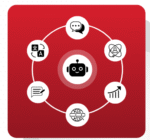Rob Lennon – n8n Crash Course
$199.00 Original price was: $199.00.$39.00Current price is: $39.00.
Introduction: Why This n8n Crash Course Stands Out
If you want to automate your workflow efficiently, the Rob Lennon – n8n Crash Course is your perfect launchpad. Unlike surface-level tutorials, this detailed guide walks you through real use cases, hands-on workflows, and advanced strategies that transform how you work.
Moreover, it’s designed for everyone — from absolute beginners exploring automation to professionals looking to scale their business processes. Throughout this guide, you’ll understand core n8n principles, explore essential integrations, and learn the same strategies Rob Lennon uses in real-world environments.
Understanding the Power of n8n and Rob Lennon’s Approach
What Is n8n?
n8n (pronounced “n-eight-n”) is an open-source automation platform that connects your apps, services, and data through visual workflows. Unlike closed automation tools, n8n gives you full control — you can host it yourself, integrate any API, and extend it using custom code.
It’s flexible, transparent, and endlessly customizable. You can connect your CRM to Slack, send automatic reports, or even chain AI actions together. As a result, it empowers individuals and teams to automate tasks without needing heavy coding knowledge.
Who Is Rob Lennon?
Rob Lennon is a renowned automation strategist and educator who simplifies complex tech into easy, actionable systems. His n8n crash course emphasizes clarity and structure — every module helps you build confidence, not just workflows. Through real projects and structured learning, you gain both conceptual understanding and practical mastery.
Course Outline: Step-by-Step Path to Automation Mastery
To make learning easier, the course follows a structured sequence. Each module focuses on one goal, gradually moving from basics to advanced automation.
| Module | Focus Area | Learning Outcome |
|---|---|---|
| 1 | Installation & Setup | Learn environment setup, UI basics, and first nodes |
| 2 | Building Your First Workflow | Create, execute, and debug simple workflows |
| 3 | Data Transformation & Logic | Manage JSON, loops, and condition branches |
| 4 | Integrations & APIs | Connect apps using REST API and webhooks |
| 5 | Error Handling & Recovery | Apply retry logic, error triggers, and alerts |
| 6 | Scheduling & Triggers | Set up cron jobs, polling, and event-driven triggers |
| 7 | Real-World Projects | Build production-ready workflows and automations |
| 8 | Scaling & Maintenance | Learn deployment, monitoring, and scaling |
| 9 | Advanced Nodes | Build and use custom nodes or community plugins |
| 10 | Final Projects & Future Steps | Consolidate learning with advanced use cases |
Each stage transitions smoothly to the next, ensuring that every learner builds a solid foundation before moving ahead.
Deep Dive: Key Learning Modules Explained
Module 1 – Installation & Setup
To start, install n8n either through Docker, desktop, or the cloud platform. Once installed, explore the visual editor and node panel. You’ll soon understand how each node acts as a building block for your workflows.
Additionally, Rob Lennon’s guide helps you configure environment variables, connect credentials safely, and perform your first “Hello World” automation.
Module 2 – First Workflow in Action
After installation, you’ll create a small automation using a webhook or time-based trigger. Then, connect a few nodes to send or receive data, and test how the workflow executes. Consequently, you’ll learn to visualize data flow, debug issues, and monitor execution results effectively.
Module 3 – Data Transformation & Logic
This section focuses on how n8n processes data. You’ll work with Set, Function, and If nodes to clean, format, and filter data dynamically. Moreover, you’ll explore how JSON and variables interact, allowing you to manipulate data effortlessly.
By the end, you’ll know how to handle conditional logic, loops, and branching — essential for advanced automation.
Module 4 – Integrations and APIs
Once you’ve mastered basic workflows, the next step is to connect third-party applications. n8n supports hundreds of integrations, including Slack, Google Sheets, Airtable, and HubSpot.
You’ll also learn how to make API calls, handle authentication (API keys, OAuth), and parse responses efficiently. Therefore, you’ll be able to connect almost any online tool and automate complex data flows seamlessly.
Module 5 – Error Handling & Reliability
No automation system is perfect, which is why error handling is vital. Rob Lennon’s n8n crash course explains how to use “Error Trigger” nodes, retries, and fallback workflows. In addition, you’ll discover how to send alerts through email or chat apps whenever something fails.
This proactive approach ensures your automations stay stable, even when external APIs change or fail.
Module 6 – Scheduling and Triggers
Workflows can start from various triggers — webhooks, scheduled timers, or manual events. You’ll practice setting up cron expressions, polling intervals, and conditional execution paths. As a result, you’ll design automations that run at the perfect time without constant monitoring.
Module 7 – Real-World Projects
In this hands-on module, you’ll apply everything learned so far. For example, you might automate a lead-to-CRM funnel:
Capture leads via a webhook form
Validate and enrich data
Check for duplicates in CRM
Update or create new records
Send notifications to Slack
Log all actions in Google Sheets
Through such real examples, you’ll gain the confidence to tackle business-grade automations.
Module 8 – Scaling and Maintenance
Once your workflows grow, scaling becomes essential. This module covers environment separation (development, staging, production), logging, backups, and version control.
Moreover, you’ll learn how to manage credentials securely, monitor resource usage, and implement high availability for enterprise-grade reliability.
Module 9 – Custom Nodes and Extensions
At this stage, you’ll move from user to creator. The course teaches you to build custom nodes in JavaScript or TypeScript. These custom elements extend n8n’s functionality and can integrate with private APIs or business systems.
Consequently, you’ll gain the flexibility to design tailor-made automation components.
Module 10 – Deployment and Next Steps
Finally, you’ll explore deployment strategies and advanced monitoring. You’ll learn to migrate workflows, document processes, and plan upgrades safely.
Additionally, Rob Lennon encourages learners to share their workflows, contribute to open-source repositories, and continue refining their skills long after the course ends.
Best Practices from Rob Lennon’s n8n Crash Course
Use modular workflows so updates remain easy.
Always name your nodes descriptively for better debugging.
Test frequently using small datasets.
Secure credentials through environment variables or secrets management.
Add error notifications via Slack or email.
Keep documentation for every workflow to help future collaborators.
Monitor performance using logs and execution history.
Implement version control to maintain workflow integrity.
Following these steps ensures your automations are efficient, safe, and scalable.
Common Challenges and How to Overcome Them
Complex data formats: Use test nodes to visualize payloads and adjust mappings.
API limits: Add throttling or retry strategies to avoid service bans.
Expired credentials: Automate refresh token processes.
Parallel conflicts: Use locks or queues to control workflow concurrency.
Error blindness: Implement global error triggers and reporting dashboards.
Through this proactive mindset, you’ll maintain workflow reliability and minimize downtime.
Practical Example: Automating Daily Reports
Imagine automating your daily performance report. n8n can pull metrics from Google Analytics, process them, and send a summary email every morning.
Furthermore, you can enhance it by adding a Slack notification or storing the data in Airtable. This combination of triggers, transformations, and actions demonstrates how easily automation can save hours of manual effort.
Beyond the Crash Course: Expanding Your Skills
After completing the Rob Lennon n8n Crash Course, consider exploring:
Community-contributed workflows and templates
Integration with AI tools for intelligent automation
Workflow analytics dashboards for visualization
Multi-environment pipelines for large-scale projects
As you grow, you’ll discover how automation isn’t just about saving time — it’s about multiplying possibilities.
Conclusion
The Rob Lennon – n8n Crash Course is more than just a tutorial; it’s a complete journey into the world of automation. By mastering its modules, you’ll be able to connect apps, design powerful workflows, and optimize business processes from end to end.
In summary, n8n empowers you to take control of your data, while Rob Lennon’s structured approach ensures that learning is smooth, practical, and transformative. Once you finish, you won’t just know how automation works — you’ll be ready to build systems that work for you.









